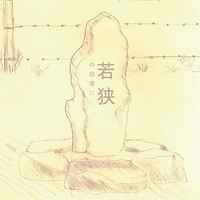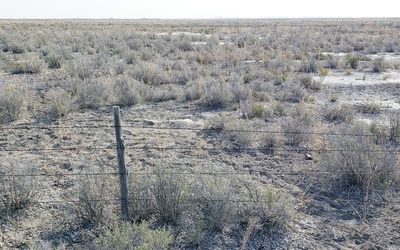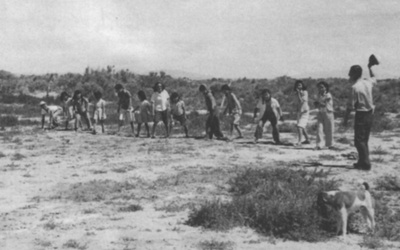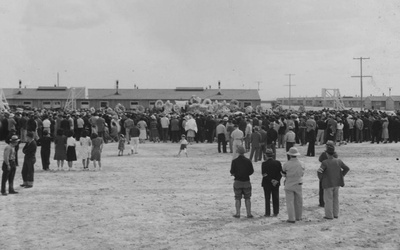The Power of Place: James Hatsuaki Wakasa and the Persistence of Memory

Seventy-eight years ago, James Hatsuaki Wakasa was shot and killed while walking his dog in the Utah desert. In a finding that would sound all too familiar to today’s Black Lives Matter protesters, an official inquiry determined that the killing was a “justifiable military action.” Mr. Wakasa’s fellow incarcerees at the World War II Topaz Relocation Center may not have agreed: a memorial was erected to Mr. Wakasa near where he was killed. The military and the Topaz administration quickly ordered the monument destroyed. If, as they claimed, the killing of an innocent man walking his dog was justified, it was “most inappropriate that a monument be erected to him.”
When Nancy Ukai, director of the “50 Objects/50 Stories” project, shared with us a map she had found in the National Archives that documented the precise location of the 1943 killing, we authors traveled the 500 miles from our home to Topaz to learn if any traces of the monument remained.
This series describes our quest and its results.
*Editor’s note: Discover Nikkei is an archive of stories representing different communities, voices, and perspectives. The following article does not represent the views of Discover Nikkei and the Japanese American National Museum. Discover Nikkei publishes these stories as a way to share different perspectives expressed within the community.
Stories from this series
Part 5: Epilogue—The Persistence of Memory
July 11, 2021 • Jeff Burton , Mary M. Farrell
The monument stone, toppled, perhaps face-down in the dirt, is a witness to the honor fellow incarcerees tried to show Mr. Wakasa. It is also a witness to the administration’s effort to eradicate that honor and suppress the truth of the killing. For the stone to tell its story, it needs to be carefully examined by gently lifting it by its side to keep any cracks from spreading, to see if there are traces of writing or other markings on …
Part 4: Memories on the Landscape in 2020
July 4, 2021 • Jeff Burton , Mary M. Farrell
In the fall of 2020, wildfires were raging across California, and smoke in our hometown of Lone Pine, near Manzanar, made it hard to breathe. With new information in hand, we planned a short escape, our first journey after nine months of surgeries and chemotherapy. We drove through Nevada across beautiful, stark landscapes to see if we could perhaps find a few bits of concrete, a memory left at the Topaz incarceration camp. We had returned several times to Topaz …
Part 3: Reclaiming History
June 27, 2021 • Jeff Burton , Mary M. Farrell
1943–1946: While Walking his Dog How is such a tragic event noted when it occurs? What memories are taken away? By the time Topaz closed in October 1945, Wakasa’s shooting had been documented in various ways beyond the government memos and press releases. Memories of the children appear to be benign. Lillian Yamauchi and her third-grade classes kept a diary at Topaz. The entry for April 14, 1943, states: “On Sunday evening at 7:30 o’clock, an old man, Mr. James H. …
Part 2: Shot and Killed in 1943
June 20, 2021 • Jeff Burton , Mary M. Farrell
The evening of April 11, 1943, James Hatsuaki Wakasa had dinner with a friend but left the mess hall early to walk his dog.1 During his walk he talked to a nine-year-old boy (Ukai, personal communication to Jeff Burton, 2020). There are several accounts of what happened next, Mr. Wakasa had been incarcerated at Topaz for 6 months and 10 days when he was shot and killed by the military police sentry posted in Guard Tower #8. The Wakasa Killing …
Part 1: A Story Meant to be Found
June 13, 2021 • Jeff Burton , Mary M. Farrell
Prologue: The Power of Place As archaeologists, we have experienced the power of place in all sorts of sites. But after almost 30 years investigating sites associated with the World War II mass incarceration of Japanese Americans, we have found these confinement sites among the most powerful, the most expressive. Bulky, immovable concrete foundations from guard towers and remnants of barbed wire speak of imprisonment. Communal latrines and mess halls tell of the lack of privacy and loss of family structure …








